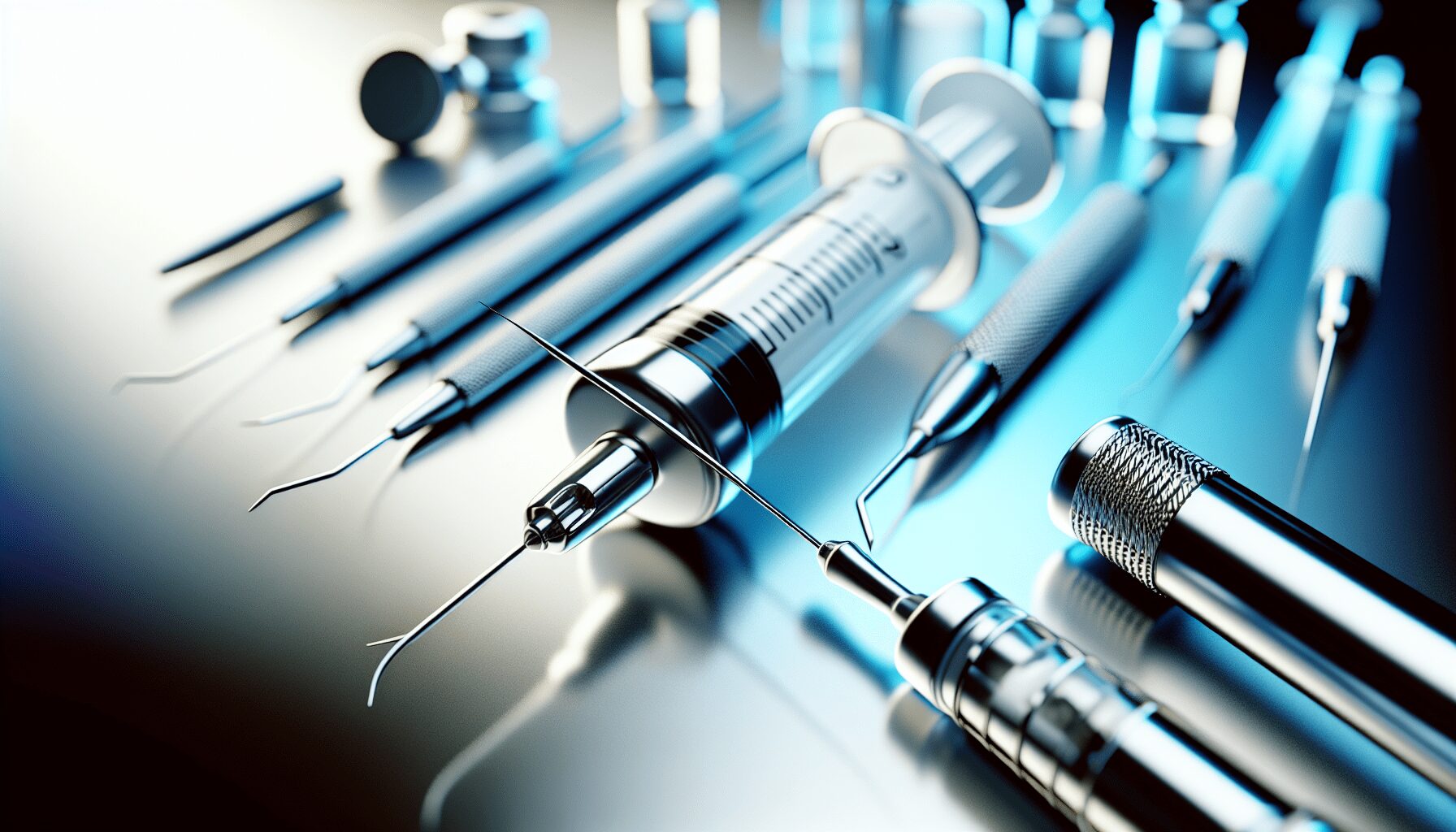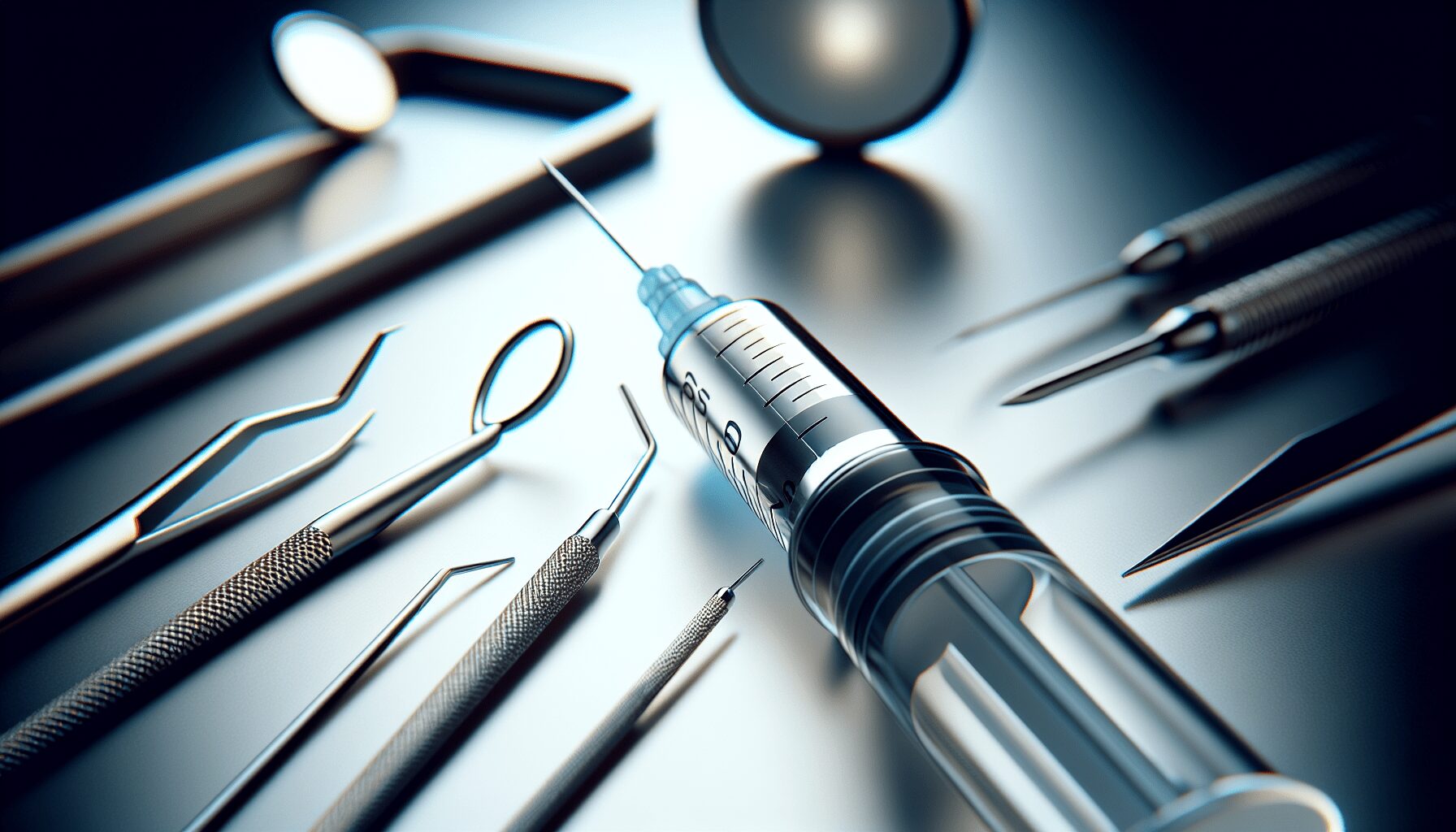What Is The Most Painful Dental Anesthetic?
Do you remember the last time you sat in a dentist’s chair, feeling a mix of dread and curiosity as the cold, metal instruments glinted in the overhead light? If so, the thought of dental anesthetics might bring up memories far less nostalgic and way more, shall we say, uncomfortable. A common theme among dental visits, aside from the sound of that ominous drill, is the needle delivering anesthetic—a necessary precursor to pain relief that unfortunately comes with its own sting. But you might wonder, what is the most painful dental anesthetic?
Understanding Dental Anesthetics
Dental anesthetics play an essential role in staving off pain during various procedures. They work by numbing a specific area of the mouth, eliminating pain by blocking the nerves from sending pain signals to the brain. This sound impressive, right? Yet, the process of administering the anesthetic can be an entirely different story.
There are primarily two types of dental anesthetics: local anesthetics and general anesthetics. Local anesthetics, such as lidocaine, numb a specific area and are usually administered via injection. General anesthetics, on the other hand, render a patient unconscious and are typically reserved for more invasive surgeries.
Types of Local Anesthetics
Local anesthetics vary in strength, duration, and potential discomfort upon administration. Here’s a breakdown of some commonly used types:
| Anesthetic Type | Common Brand Names | Characteristics |
|---|---|---|
| Lidocaine | Xylocaine | Fast-acting, moderate duration |
| Articaine | Septocaine | Rapid onset, strong numbing, effective for short procedures |
| Mepivacaine | Carbocaine | Intermediate duration, used in people sensitive to epinephrine |
| Bupivacaine | Marcaine | Long-lasting, often for lengthy procedures |
Each has its own reputation when it comes to the discomfort of the injection. Pain levels can vary based on the anesthetic’s chemical composition, as well as the patient’s individual sensitivity.
Factors Influencing Pain During Anesthetic Injection
The discomfort associated with dental anesthetics is not only about the anesthetic itself. Several factors play significant roles:
Needle Size and Injection Technique
It might surprise you that the needle’s size can influence the pain level. Thinner needles often result in less discomfort. However, the technique and expertise of the dentist administering the anesthetic matter significantly. A skilled dentist can reduce pain through a steady hand, precise placement, and a slow injection process.
Anesthetic Temperature
Have you ever noticed how cold things can hurt more? The same principle applies to dental anesthetics. If the anesthetic is near room temperature, rather than freshly taken out of a cold storage, it can result in less pain upon injection.
Speed of Injection
Patience is not just a virtue; it’s also a key to less painful anesthetic administration. Fast injections tend to cause more discomfort because they increase tissue pressure. A slow, steady insertion gives your tissues time to accommodate the liquid, thereby reducing pain.
Patient’s Pain Tolerance and Anxiety Levels
Pain perception is subjective, often pegged to individual pain tolerance and anxiety levels. A patient who’s nervous might anticipate more pain, potentially heightening the sensation. Techniques such as distraction, relaxation exercises, or even breathing in through the nose and out through the mouth can help manage anxiety and potentially reduce the perception of pain.
The Contenders: Most Painful Anesthetics
Though perceptions vary, some anesthetics are notorious for causing a sharp pinch or burning sensation upon injection. But which one stands out as the most painful?
Articaine
Many patients report that initial injections with articaine can cause a quick, sharp sting. This might stem from articaine’s high potency and the fact that it’s often used in procedures where quick action is necessary. Despite this, its effective numbing qualities make it popular for short, yet intense procedures.
Lidocaine
Lidocaine is often seen as the ‘gold standard’ for dental anesthetics. It may cause some initial discomfort when injected, especially if done too quickly or with a cold solution. However, most patients find the numbing effect worth the fleeting sting.
Bupivacaine
Known for its longer-lasting effects, bupivacaine can be associated with more pain upon injection. Its strong formulation and potentially thicker consistency might contribute to an above-average sting, although this varies widely among patients.
Tips for a Less Painful Experience
While you can’t control every aspect of your dental experience, there are steps you can take—or ask your dentist to take—that may ease the injection process:
Communicate with Your Dentist
Let your dentist know about any past experiences and your pain threshold. They can adjust their technique or choose a different anesthetic that might suit you better.
Focus on Breathing
Anxiety can amplify pain. Practicing deep, steady breathing can help manage stress and create a calmer experience.
Topical Anesthetics
Ask your dentist to apply a numbing gel to your gums before the injection. This extra layer of desensitization can help minimize the pain upon needle entry.
Warm Up the Anesthetic
While it might not always be possible, warming the anesthetic to body temperature can decrease discomfort. A quick chat with your dentist about this might lead to a less painful experience.

Recovery and Aftereffects of Dental Anesthetics
Once the procedure is over, and the anesthetic begins to wear off, you might experience some minor aftereffects, such as:
- Numbness and Tingling: An almost ‘pins and needles’ sensation can occur as numbness fades.
- Minor Swelling or Bruising: This might appear at the injection site, especially if the anesthetic was injected quickly or in a complex area.
Tips for Easier Recovery
These symptoms typically dissipate quickly, but some steps can speed up your recovery:
- Rest: Avoid chewing or drinking hot liquids until full sensation returns to prevent accidental injury.
- Apply Ice: A cold pack can help alleviate any swelling or discomfort.
- Hydrate: Drinking water maintains oral health and can help wash away any remnants of the procedure.
Sweet Water Dentistry: Your Peaceful Dental Haven
When it comes to dental care, choosing the right practice can transform these dreaded visits into manageable experiences. At Sweet Water Dentistry, we embrace a philosophy that caters to both your oral health needs and emotional comfort.
Our Commitment to Care
Our goal is straightforward: to foster an environment where your dental health thrives amid comfort and reassurance. We understand the apprehension many face at dental appointments and commit to making each visit as pleasant as possible. Regular dental visits are crucial, and our team takes immense pride in equipping you with all the information needed to feel confident in your treatment choices.
Why Choose Us?
Located at 5915 Sweetwater Cir, Fairhope, AL 36532, Sweet Water Dentistry invites you to experience a place where outstanding dental services merge with a tranquil atmosphere. Whether you’re here for a checkup or more complex procedures, rest assured we prioritize your comfort and care.
From handling your insurance claims to accepting payments at the time of service, we strive to make every aspect of your visit smooth and straightforward.
Joining Our Community
Consider making Sweet Water Dentistry your family’s dental home. We nurture lasting relationships, welcoming adults and children to join our growing dental family. Dr. Phillip N. Greer, D.D.S, leads our heartfelt mission to deliver excellence in dentistry rooted in respect, compassion, and service to our Fairhope community and beyond.
For any dental needs or inquiries, we invite you to connect with us at (251) 210-2773 or visit our website at sweetwatersmile.com. Let our dedicated team provide the gentle care you deserve, turning dental visits into positive experiences rather than anxious affairs.
In wrapping this up, next time the thought of dental anesthetics crosses your mind—perhaps during a drive past the serene Alabama coast—remember that armed with the right knowledge and a caring dentist by your side, even the most ominous-looking needle can become a minor blip in your day.
Visit us for expert care:
Sweet Water Dentistry
📍 5915 Sweetwater Cir, Fairhope, AL 36532
🌐 sweetwatersmile.com
📞 Call or Text: (251) 210-2773
Follow us on Facebook and Instagram for the latest updates and special offers!

